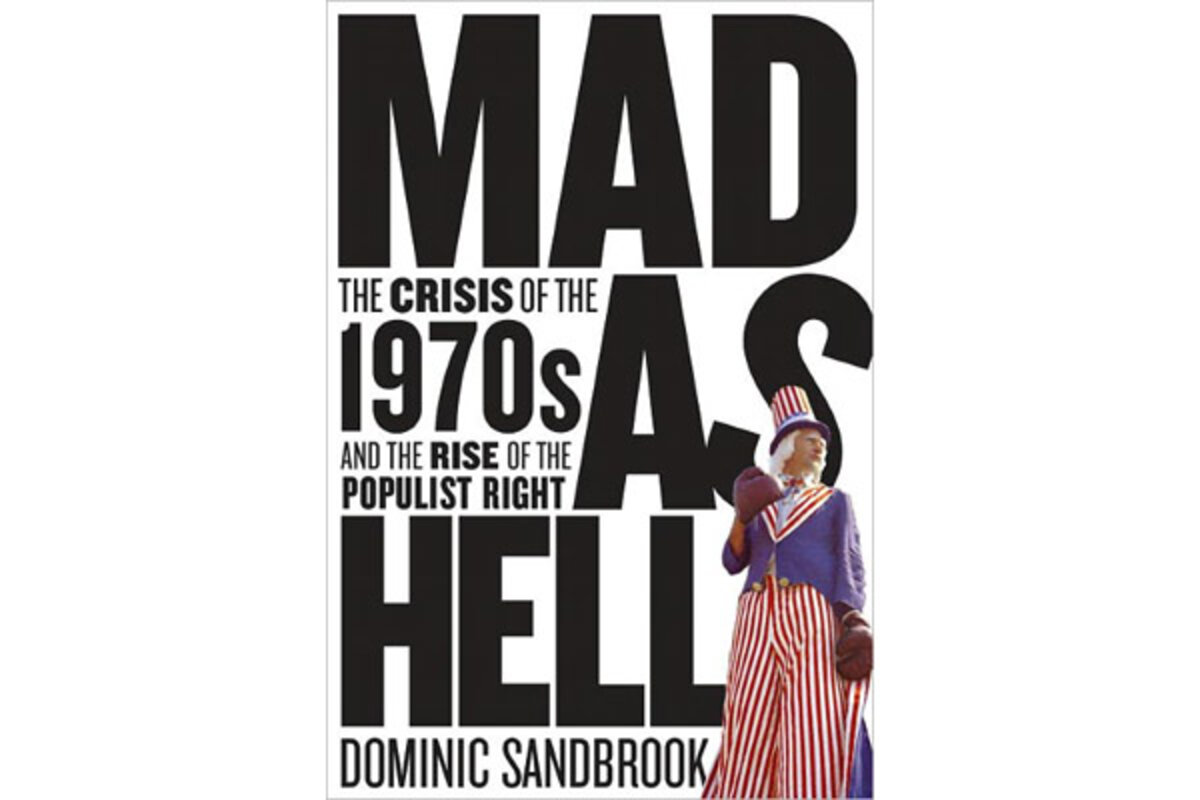Mad as Hell
Loading...
British historian Dominic Sandbrook brings the 1970s back to vivid life in Mad as Hell, his entertaining, opinionated take on the politics, economics, and cultural signifiers of a decade he views as the incubator of today’s right wing. Largely based on United States Census Bureau data and a close reading of the media of the day, Sandbrook casts a fresh and skeptical outsider's eye on a grey decade of rampant inflation, heated political rhetoric, the slow death of the union movement, and tax revolts climaxing in Proposition 13, the successful bill Howard Jarvis developed in California in 1978.
Sandbrook, who also has written books about Britain in the early ‘70s and Eugene McCarthy’s political arc, here tracks the United States from the resignation of Richard Nixon in 1974 to the election of Ronald Reagan in 1979. He suggests that the embarrassment of Watergate, the humiliation of Vietnam, and President Gerald Ford’s controversial pardon of Nixon paved the way for an outlier like Jimmy Carter, the canny but chilly peanut farmer from Plains, Georgia. He also suggests Carter’s flaws and missteps as president – his fatalistic outlook, an inability to build political coalitions, his failure to contain inflation, an Iranian hostage crisis in which he tried too hard to be macho – made the sunny Ronald Reagan an especially attractive successor.
Sandbrook calls Nixon and Carter introverts; likes and often praises Ford, despite public perception of the man as clumsy and ineffective; and convincingly depicts Reagan as the smoothest politician of the bunch (and more self-made than his lazy image suggests; it seems he wrote most of his own speeches).
He peppers his politics-dominated chronicle with capsule biographies of such period movers and shakers as the Rev. Jerry Falwell, whose Moral Majority presages today’s Tea Party movement; Phyllis Schlafly, the right-wing trailblazer who almost singlehandedly defeated the Equal Rights Amendment despite its ratification by 38 states; and lesser lights like Clay Smothers, a man with a bizarre message: “But the real star of the show was Clay Smothers, an outspoken black Texas state representative,” Sandbrook writes of the tumultuous National Women’s Conference held in Houston in late 1977. " ‘I have had enough civil rights to choke a hungry goat,’ [Smothers] thundered to rousing cheers. ‘I ask for victory over the perverts in this country. I want the right to segregate my family from these misfits and perverts.’ ”
A loose interpretation of civil rights indeed.
While most of the book consists of long, thematic chapters, briefer interludes have their own, focused heft. These treat, among others, Bruce Springsteen, whose 1975 smash album, “Born to Run,” brought welcome relief from recession and gasoline shortages; “Charlie’s Angels,” the 1976 television hit that drew scorn for its “jiggle” factor but signaled woman power to right-wing icon Ayn Rand; and the Dallas Cowboys, “America’s Team,” the football juggernaut of the decade under arch-conservative Coach Tom Landry and arch-conservative quarterback Roger Staubach.
While I like the way Sandbrook integrates numerous sources into his narrative, I think he may have short-shrifted some figures – calling erstwhile California governor Arnold Schwarzenegger an “Austrian bodybuilder” is catty at best – and his suggestion that Marlon Brando is of Italian descent may be off-target. But these are nits.
Perhaps more problematic, depending on one’s expectations: Sandbrook doesn’t explicitly connect ‘70s events to today’s right wing. Links can be drawn between the periods, such as stylistic cues President Barack Obama takes from Reagan; the Tea Party’s expropriation of approaches developed by Falwell’s Moral Majority and Schlafly’s Eagle Forum; and the continuing argument over public education, an issue Sandbrook explores in depth in his coverage of the busing controversy that turned South Boston into a battleground in 1974 and 1975.
Overall, however, “Mad as Hell,” which takes its title from the Howard Beale character Peter Finch played in the expressive 1976 film “Network,” is a comprehensive overview of a decade in which America lost its self-esteem and came to recognize, while straining against, its limits. Packed with anecdote and insight – Sandbrook notes that the spread of air-conditioning was key to the rise of the Sunbelt, “easily the most striking demographic story of the decade” – his book is a terrific read. Be sure to catch the last paragraph of the acknowledgments. It’s remarkably written, charmingly personal and totally disarming.
Carlo Wolff is a freelance writer in Cleveland, Ohio.





